Masashi Kishimoto’s Naruto is one of the defining series of both the '00s and the 2010s, the original manga spanning 15 years and the accompanying anime lasting a few years after. It is a touchstone franchise that was often compared by critics and even by some fans to Dragon Ball Z when it reached American soil on the Toonami programming block. Its story of Naruto Uzumaki’s quest to not only become Hokage but learn the secrets of his past are equal parts epic and empathetic. Naruto is relatable to anyone who has ever strived for success while feeling out of place. Heck, Naruto could be a stand-in for anime itself in the 2000s, capable of accomplishing great things, yet treated like a juvenile foreign “other” by mainstream media pundits.
And when you look back at Naruto’s early chapters and episodes, it’s obvious why fans were so quick to latch onto the series. The characters are funny, action-ready, and layered, each one striving for their own brand of ninja greatness and each one devoted to ideals that are desperately personal. As a setting, the Hidden Leaf Village rides the line between fantastical and approachable. The plot from the onset has many working gears, but nothing too overwhelming. Unlike some series that bog themselves down in copious, plodding exposition, Naruto has, well, stuff going on.
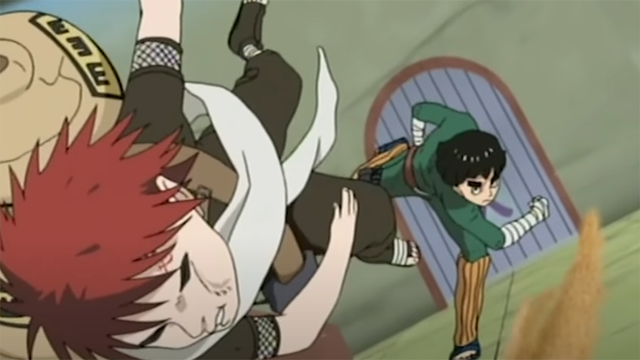
These strengths of the early parts of the series come to a head with the Chunin Exams, an arc that is not only known as one of the best in the entirety of Naruto, but also one of the best “tournament arcs” in the history of anime. The tournament arc is a lauded staple of the medium, and when done well, like in My Hero Academia’s Sports Festival or Yu Yu Hakusho’s Dark Tournament, they’re a series of memorable contests that accentuate the running themes of the show while also exemplifying the struggles of the beloved characters. However, when done poorly, they mostly seem like an excuse to just get everyone in the same arena, a “Get Out Of Character Development Free” card that can be played when the cast is too big to adequately balance.
Not only does the Chunin Exams manage to balance Naruto’s burgeoning league of characters, it thrives in the escalating counts and chaos. This is because of its disbursement of goals, a process that ensures that not only does every character have a common quest to conquer (reach the Chunin rank of being a ninja) but side achievements and inner victories. Thanks to Kishimoto’s deft hand, none of these ambitions usurp the others, and none of the characters come off as looking unimportant or especially weak. A side-effect of tournament arcs is often that they wreak havoc on the “power levels” and scales of the series, fixing the rank of characters due to their placement relative to the finals. The Chunin Exams, which starts as a series of tests and challenges and slowly advances to a proper tournament, never lets this happen.
It’s not enough that I just tell you this, so let’s explore these strengths in play with a look into the four most prominent participants of the Exams — Naruto, Sasuke, Sakura, and Rock Lee.
Naruto
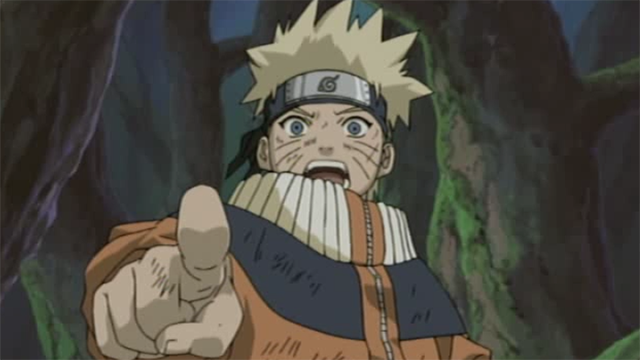
Out of anyone, Naruto’s intentions are probably the most simple: He wants to become a Chunin because being a Chunin is another important stepping stone toward being Hokage. He has a rivalry with Sasuke, a tumultuous friendship with Sakura, and is eager to please his team leader Kakashi. He is the main character and the series is named after him, so he constantly teeters toward the precipice of “Everyone stop and pay attention to what Naruto is doing.” But the Chunin Exams doesn’t allow that. Rather, it delights in subverting it.
In the written portion of the exam, Naruto doesn’t answer any of the questions. Rather, he makes it clear that failing the test won’t block his ambitions. Along with maintaining a thematic thru-line that was established during the earlier Bell Test in which Team 7 didn’t technically win, but passed thanks to their devotion toward the betterment of each other, it establishes that Naruto is imperfect. He might seem “destined” for the role of Hokage, but the road will not be an easy one.
This continues with the Forest of Death, in which Naruto and Sasuke face Orochimaru, a villain whose power towers over all of them. Naruto is eager to fight and puts up a valiant effort, but is eventually rendered unconscious. Naruto being taken out allows for other characters to step in and gain the spotlight, but it also shows that this will not be a case of “New bad guy emerges, Naruto gets powerful and defeats new bad guy, repeat.”
The after-effects of this battle last into the actual tournament portion where Naruto puts up a poor showing in the preliminaries against Kiba until he literally farts out a victory. He trains with Jiraiya, mid-tournament, to cover some of the weaknesses he’s experienced thus far and he is eventually able to beat Neji using his improved skills. Naruto succeeds, not because he’s able to 100 percent all of the objectives of the exam, but rather because he works to cover his weaknesses.
Sasuke
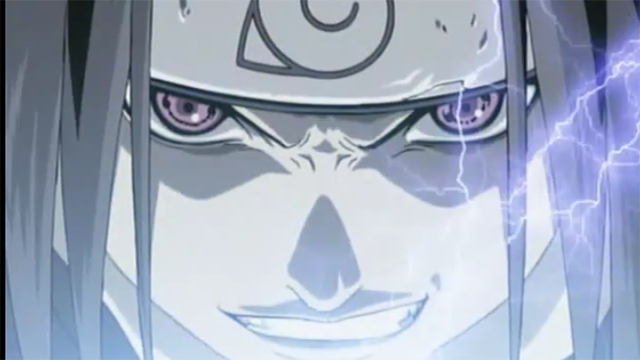
Sasuke’s intention is to pass the Chunin Exams as well, but this goal is almost over-shadowed by the other things he has going on. His relationship with Naruto is evolving into a kind of troubling rivalry, and his various obsessions lead him to constantly cast a blind eye toward Sakura. He relates to Kakashi in ways that have yet to be fully explored and he harnesses a grudge against Rock Lee, whose strength angers and befuddles him. Meanwhile, he searches for his murderous brother Itachi and his arc involving Orochimaru is set to soon begin.
In short, Sasuke and Naruto are reversed heading into this arc. Sasuke actually cheats to answer the questions in the written exam, while Naruto passes through a kind of dramatic showcase of his morals. For Naruto, becoming Chunin and becoming Hokage IS the goal, and the rest is leading up to it. For Sasuke, gaining this kind of power is the lead-up to the revenge he aspires for.
Sasuke “copying” to progress in the exams comes into play again with his fight against Yoroi, as he is “inspired” by a move he saw Rock Lee use and delivers his own variation. And finally, in his match against Gaara, he unleashes the Chidori, a move he learned from Kakashi. All of these imitations don’t imply that Sasuke is any less of a warrior. Rather, they reveal the cracks in Sasuke’s own delusions (“I don’t need anybody! I can find my brother/beat Orochimaru/do all the cool ninja stuff I want all by myself!”), while hinting at his eventual reconciliation with his friends and the Hidden Leaf Village. Sasuke needs others just as much as they need him.
Sakura
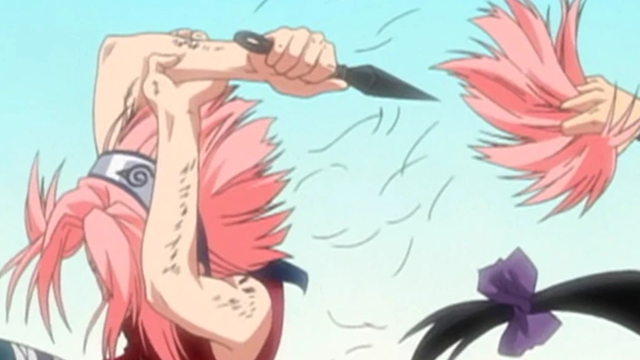
Out of anyone, Sakura has the most complicated tie to the exams. Already, Sakura feels relegated to being a supporting player, both by the events of the story and by her own personality. Constantly second-guessing herself and others, she struggles to deliver on her own strengths. So the Chunin Exams don’t just test her abilities, but they also establish what her abilities even are.
First off, she answers all of the questions on the written test, and then, when Naruto and Sasuke become injured by Orochimaru, she’s quick to provide aid. However, she soon finds herself tangling with Kin of Team Dosu, who taunts her while grabbing her hair. It is here that Sakura surpasses her original conception of herself as she cuts her hair off and turns the tables on her opponent.
This kind of revelation of inner strength is on display again during Sakura’s fight with Ino, her rival. While lacking the big “power” moments of Rock Lee and Sasuke’s fights, it brings Sakura’s arc in this storyline full circle. She does not have the combative skill of Naruto or Sasuke, but she is a warrior nonetheless and her double KO with Ino illustrates her willingness to go the distance, just as her peers do.
In a way, Sakura has the most to gain from something strenuous like the Chunin Exams, which places emphasis on her skills as both a team player and a solo fighter. Naruto has made it clear that his success is outside of the bounds of what any formal examination can provide, and Sasuke has no personal ties to the rigors of the contest. But Sakura needs it, a structured push that ends up with an emotional breakthrough.
Rock Lee
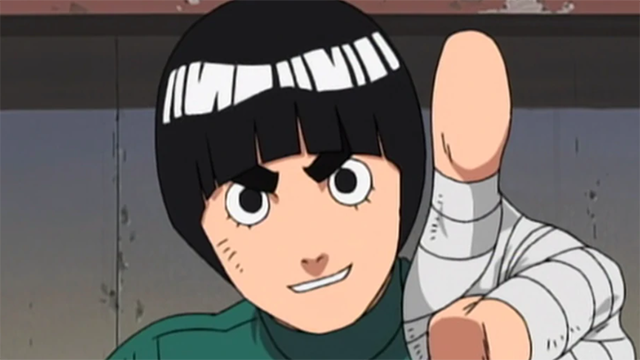
If any character delivers the defining moment of the arc, it’s Rock Lee as he drops the weights in the fight against Gaara. It’s a moment that would go on the Mt. Rushmore of memorable Naruto moments if such a thing existed. And it epitomizes the theme that Rock Lee stands for: That, despite extremely human weaknesses, we’re capable of wonderful, awe-inspiring things.
Unlike the rest of the characters here, Rock Lee’s performance in the Chunin Exams is funneled toward one specific moment. Though he is able to compete with Sasuke, his time in the Forest of Death is fairly unremarkable, especially when compared to Gaara, who is the Naruto equivalent of a slasher movie character, easily dealing with anyone in his path. This contrast is built for a reason, and Rock Lee constantly wanting to prove himself matches nicely with Gaara’s feeling that he has nothing to prove.
The fact that Rock Lee’s Taijutsu stuns Gaara and that he nearly dies in his fight with the sand-controlling ninja is more important than any victory would’ve been. Like Sakura, Rock Lee is searching for a way to affirm his place in the world, but the way he does it calls into question the entire process of becoming a ninja. Is it wrong to push these children this way? How far is too far? Rock Lee’s inability to use any other Jutsu than Taijutsu brings all of these concerns down to earth and reverberates around the other characters. An integral part of Rock Lee’s arc is the sudden realization that the other ninjas aren’t just superpowered anime characters but teenagers trying to accomplish their dreams while grappling with terrifying, potentially deadly obstacles.
In short, the Chunin Exams doesn’t just provide a series of cool tests and match-ups, but it examines the importance of the main characters’ personal goals. It explores who they are, what they want, and why they want it. And in the end, it reveals that, for young ninja, triumph is secondary, the main mission, often, is to survive.
Daniel Dockery is a Senior Staff Writer for Crunchyroll. Follow him on Twitter!
Do you love writing? Do you love anime? If you have an idea for a features story, pitch it to Crunchyroll Features.
Source: Latest in Anime News by Crunchyroll!


Comments
Post a Comment